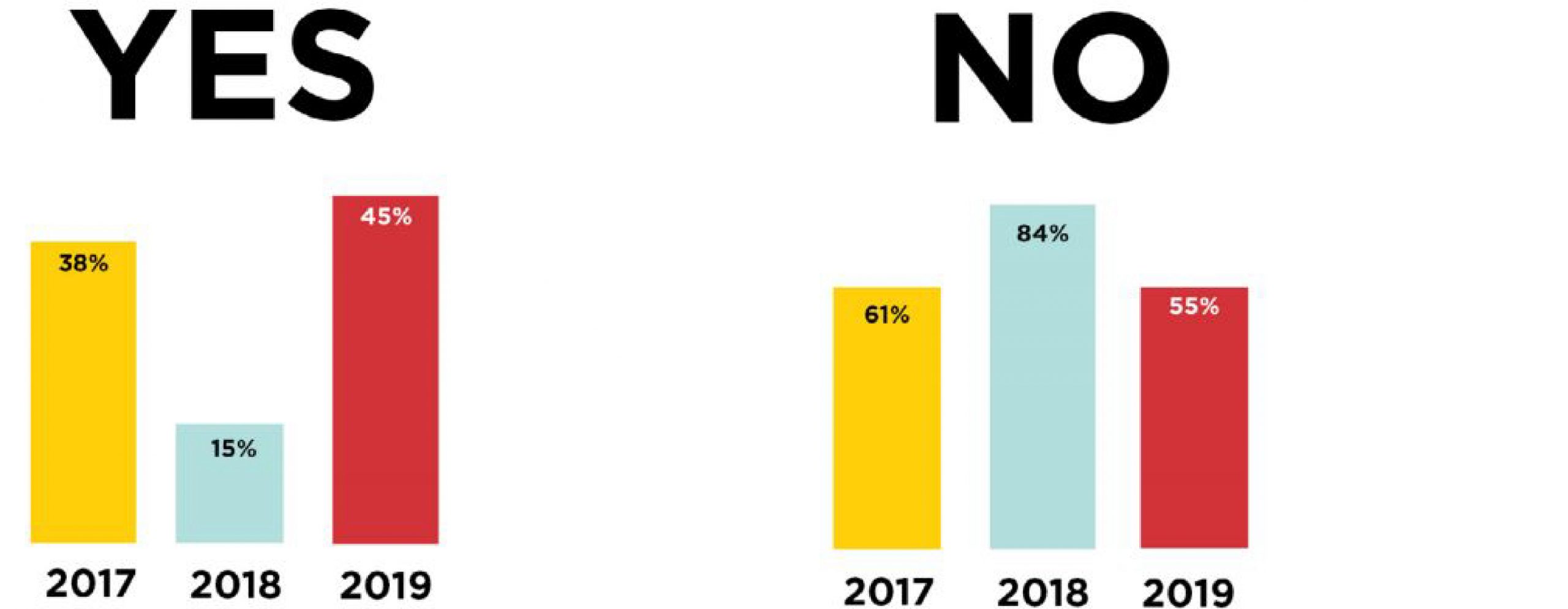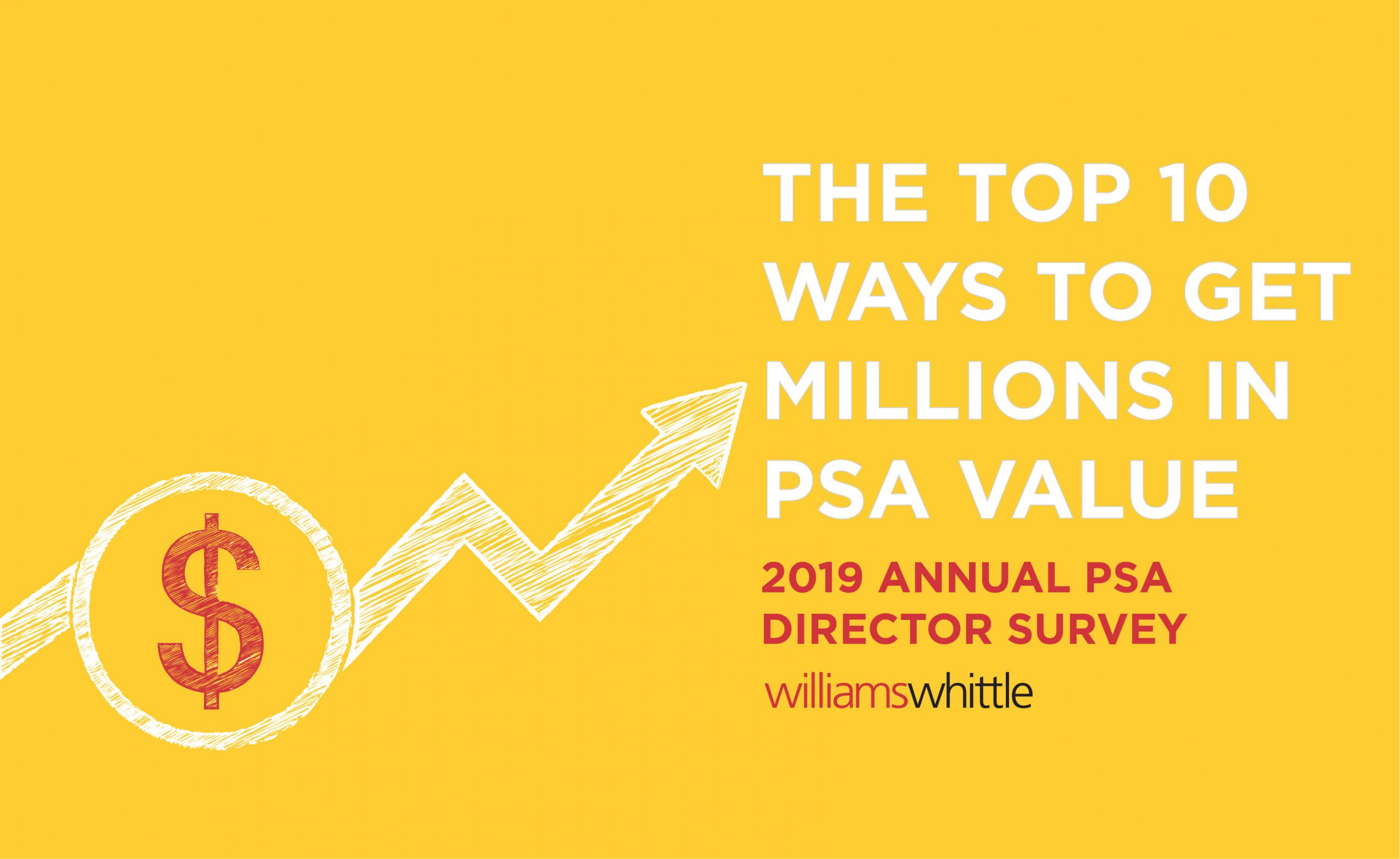Whether you’re new or not to the nonprofit space, I bet you’ve heard, “oh, you should create a public service announcement (PSA).” It’s because they are one of the very few marketing privileges for 501(c)(3)s. They look like ads, but the media run them for free. So, sure, you should take them up on this amazing offer, but before you start aligning your marketing strategy, budget and expected outcomes, make sure you stop and set yourself up for success with the right guidance and input.
Remember that saying “if a tree falls in the forest, and there’s nobody around to hear, does it make a sound?” If you create a great PSA, but it doesn’t get on the air, we know it doesn’t get heard…and your cause doesn’t benefit. For eight years now, we’ve been surveying PSA Directors about factors that help get a PSA on the air. We think the results reveal pretty clearly how you should approach a PSA program for your nonprofit so it works as hard as it can to further your mission and your marketing objectives.
Top Five Highlights
1. Rules are rules.
Rules about what qualifies your ad to be a PSA are not meant to be broken. There are two big no-nos. You can’t ask for money. And you can’t mention any corporate partners (ones that may have the money to buy ad space). It needs to be a message that doesn’t come across as self-serving for the organization but instead focuses on the mission and the benefit to society.
2. Localize your pitch.
Your PSA may be evergreen and maybe not geo-specific, but your marketing should absolutely be localized. PSA Directors care deeply about what is happening in their “backyard” and want messages on the air to help their viewers. Make sure you have examples of how your organization is making a difference in that MSA, DMA, or zip.
3. Respect that you are asking for something for free.
PSAs are programmed in to run when there is unsold ad space. So, you have to take what you can get. If you have a time-sensitive message, make sure to get your PSA to PSA Directors at least a month before you want it to air. That way, you’ll have the best chance of getting in rotation and airing when you need it.
4. Send out your PSA at the beginning of the year.
There are times of the year when there just always seems to be more space for PSAs – January/February and July/August. That’s not to say if you launch your PSA in April that it will get no play, it just might take longer to get rolling. Anticipate these two PSA “seasons” and get your PSA in the hands of the media at the ripest time.
5. Time your launch and need for airings strategically around the election calendar.
2020 is an election year. That means unsold inventory will probably be minimal, especially in hot/contested political markets. Make sure to do your research before you launch a PSA during this time.
And don’t hesitate to reach out if you want a time-proven partner that can help you leverage your PSA for a winning marketing strategy!
Full Report
As a nonprofit leader with a powerful cause, getting your message heard is a critical step in making an impact. Public service announcements (PSAs) are the most cost-effective way to raise awareness of an issue to a mass audience. But once you have your spot, how do you get it on air? You need to get your PSA through the station gatekeepers, the PSA directors, and our annual survey has uncovered even more secrets to success and ways to earn millions of in-kind value through your PSA. Now in our eighth year, our survey asks the opinions of more than 1,200 PSA directors across the country about their preferences to uncover tips for making your efforts more successful.
1. Follow the PSA guidelines.

Additionally, while you may get some airings for PSAs that directly ask for donations, but it may not be worth the extra cost for production, talent and tracking as many PSA Directors are split on whether they will air them.
Will you air a spot that directly asks for donations?

When asked to elaborate, here are some of the most popular responses:
“Depends on the content and the beneficiary.”
“Only if it’s a TRUE nonprofit.”
“Depends on familiarity w/organization and/or can research them to make sure they’re ”
WW INSIGHT: Most of the stations that will consider a PSA that asks a viewer for donations are local (not national networks) and usually not in the top markets. So, it might not be worth the extra talent, production and distribution fees.
2. Spots must be of high quality and appeal to the local audience.
Good creative is still king, but a local audience appeal has become more important. Your cause may be national, but you need to put in the work to show local media why it matters “in their backyard.”
What factors contribute to your decision to air a PSA?

Do you prefer if PSAs are localized to your area?
WW Insight: Many stations have network or station-wide initiatives that they must support, so knowing these initiatives is key.

WW Insight: Many stations have network or station-wide initiatives that they must support, so knowing these initiatives is key.
3. Shorter spot lengths are becoming more popular.
:30 and :60 are staples, but this year we’re seeing a trend for the shorter :15 spots and a new trend for longer (:90) spots.
What PSA lengths do you prefer?

4. Send campaigns 30 days ahead.
This year, more stations are still saying that they will air a campaign indefinitely, which is great for evergreen campaigns. But, beware if you have to renew talent rights and put an expiration date on your PSA. Usually, the media pays attention and will take it off the air, but tracking down those takes time and effort and may require renewing talent fees for those stations that are still airing your spot. Make sure you give the media a heads up about your timing and send PSA materials a month before you want them to air.
If you accept PSAs that have a specific time for airing, how far in advance would you like to receive materials?

How long will you/can you keep a PSA in the rotation?

5. Distribute digitally.
Save money and the environment by sending your PSA through an online distribution service such as Extreme Reach.
On which format do you prefer to receive a PSA? Answer “digital.”

6. Distribute the PSA at the beginning of the year to ensure max airplay.
The most popular months with the most airtime inventory for PSAs have always been January and February. But, don’t count out the summer and the holidays. As for changing the message for specific holidays, we asked: “During holidays, do you prefer PSAs that incorporate a holiday message?” More than 50% of stations say that “it doesn’t matter.”
In which months do you have the most airtime inventory for PSAs?

7. Paying for spots may affect your ability to run it as a PSA.
When asked, “Does paying for some spots to run affect your ability to also run it as a PSA?” more PSA Directors are saying “yes” This year. As more nonprofits carve out money to advertise, stations are getting more clued in that they could be leaving money on the table. If you do purchase media, make sure you keep “church” (sales) and “state” (PSA Directors) separate.
Does a paying for some spots affect your ability to also run it as a PSA?

WW Insight: Networks notice national advertisers, so you may be barred from airing on networks with a paid campaign in a local market. Local stations may be more lenient.
8. Creative has a shorter shelf life. Send new creative at least once a year.
This year, more stations are telling us that they have no preference as to how often they receive new creative from a nonprofit. But, we also saw an increase in stations asking for creative every six months and every year. We typically see big spikes in airings for our clients by dropping new creative six months after the first spot.
They are much more particular this year about how often they want you to ask for airtime, with 30% saying “two to three asks” for airtime per year is about right.
How often would you prefer to receive new creative from a nonprofit?

How many PSA asks from one nonprofit is too much in one year?

WW INSIGHT: Knowing that stations want to hear from nonprofits less means you’ll have to be very specific with your asks. Think long-term about your PSA program and how it will support your marketing efforts over 2-3 years so you have a good plan for asking for airtime.
9. Celebrity talent might be worth the cost.
Since we’ve been asking, “How does the use of a celebrity in the PSA have an impact on your decision to air?” stations have told us that it “doesn’t matter either way.” There is a lot of added stress of renewing annual talent fees and stop orders for those that are not renewed. And also consider that when the celebrity makes headlines, your cause may make it there too, for better or worse. Our research demonstrates celebrity talent doesn’t make airings guaranteed.
How does the use of a celebrity in the PSA have an impact on your decision to air?

10. 2020 will be even more competitive.
The number of PSA campaigns that Nielsen has been tracking has been significantly down the past two years, but in 2019 there was a 9% increase in PSA inventory.

Based on our results from our 2017 survey, PSA Directors usually anticipate less inventory in an election year, and in 2016 80% did have less. With 2020 being an election year, be aware of election windows and know that inventory may be tight for the primaries in the spring and again in the fall.
Do you expect your station to have less inventory due to the 2016 elections?

If yes, did your station end up having less inventory due to the 2016 elections?

Thanks for reading!
About Williams Whittle
Williams Whittle has thrived for 50 years as a full-service advertising agency, working with nonprofit and forward-thinking companies dedicated to making a positive impact.
We don’t just talk about successful PSA campaigns…we execute! Over the past ten years, every one of our PSA campaigns has ranked in the top five percent of all campaigns nationally. That’s millions of dollars of measured value for each of our clients, enabling them to reach new potential advocates for their causes.
Contact us today to learn more.
Julia McDowell is a PSA Specialist with nearly 15 years launching successful PSA campaigns nationwide.



